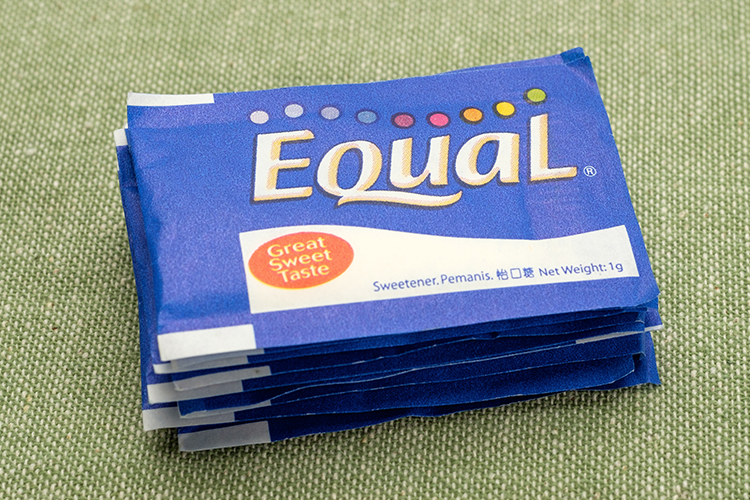Blog
Artificial sweetener consumption is on the rise
 We want to have less of the sweet stuff. Generally, that means replacing much of the heavily processed, packaged and refined foods in our pantries with real, whole and fresh food and drink.
We want to have less of the sweet stuff. Generally, that means replacing much of the heavily processed, packaged and refined foods in our pantries with real, whole and fresh food and drink.
But in efforts to sub out added sugar, many turn to artificial sweeteners. Now, this may be okay temporarily in small quantities, but do we want to be using these lab-made products for good? Shouldn’t we be focusing on enjoying the subtle sweetness of whole foods like fruit or cinnamon?
A new study has revealed that over a 13-year period, intake of artificial sweeteners by children in the U.S. has skyrocketed – by 200%.1 Yes, 200%.
The study accounted for intake of artificial sweeteners in foods, beverages, and packets in over 17,000 people using data from the National Health and Nutrition Evaluation Survey (NHANES) from 2009 to 2012, comparing the findings to a prior analysis using data from 1999 to 2008.
Since 1999 – the year that brought us to Spongebob, MySpace, and the rise of Eminem – the number of children consuming artificial sweeteners rose from 8.7% to 25.1%, and 80% of those consume it in some form every day, some starting as young as two years.
Big kids are consuming more too. In the same time period, 54% more adults are sweetening artificially.
The concern?
The jury is still out regarding safety of artificial sweeteners, like aspartame and saccharin, and if they are even effective for their intended purpose – to provide sweet satisfaction without the excess kilojoules that could lead to increased weight.
However, research suggests artificial sweetener consumption may actually contribute to weight gain and insulin resistance.2-3
A correlation between higher artificial sweetener consumption and increased weight was also found in the NHANES analysis mentioned above. This may be because those that are overweight are using the artificial sweeteners in an attempt to lose weight.
But consider this. When the body doesn’t receive the hit of sugar it anticipates following the sweet, sweet taste on the tongue, the brain does its darndest to get you to eat in order to get the glucose it desires. So, the theory is, artificial sweeteners may drive you to eat more.
Sweet sensitivity
If you are exploring ways for you or your kids to reduce added sugar and you reach for the saccharin or aspartame sweetened alternatives, consider we still know very little about long-term health impacts about long-term consumption of these lab-made food stuffs.
A little when weaning off a very high-sugar diet may be okay – in the short-term.
But you may be best to consume whole foods for a sweetness hit, like fruit, dried fruit or spices like cinnamon, fennel and vanilla. Want a fizzy drink? Try soda water infused with berries, lemon and fresh mint.
Then, allow at least two weeks for taste buds to adjust. Once they are more sensitive to sweetness, you may find a banana, mango or a date is sweet enough!
We’ve plenty of recipes to inspire in our books, e-books and website that are delicious, nourishing, and sweet enough without the need for added sugar or artificial sweetener.
By Angela Johnson (BHSc Nut. Med.)
References:
- Sylvetsky, AC, Jin, Y, Clark, EJ, Welsh, JA, Rother, KI, & Talegawkar, SA 2016, ‘Research: Consumption of Low-Calorie Sweeteners among Children and Adults in the United States’, Journal of the Academy of Nutrition and Dietetics, [Epub ahead of print].
- Chia, CW, Shardell, M, Tanaka, T, Liu, DD, Gravenstein, KS, Simonsick, EM, Egan, JM, & Ferrucci, L 2016, ‘Chronic Low-Calorie Sweetener Use and Risk of Abdominal Obesity among Older Adults: A Cohort Study’, PLoS ONE, vol. 11, no. 11, pp. 1-15.
- Kuk, JL & Brown, RE 2016, ‘Aspartame intake is associated with greater glucose intolerance in individuals with obesity’,Applied Physiology, Nutrition, and Metabolism, [Epub ahead of print].











